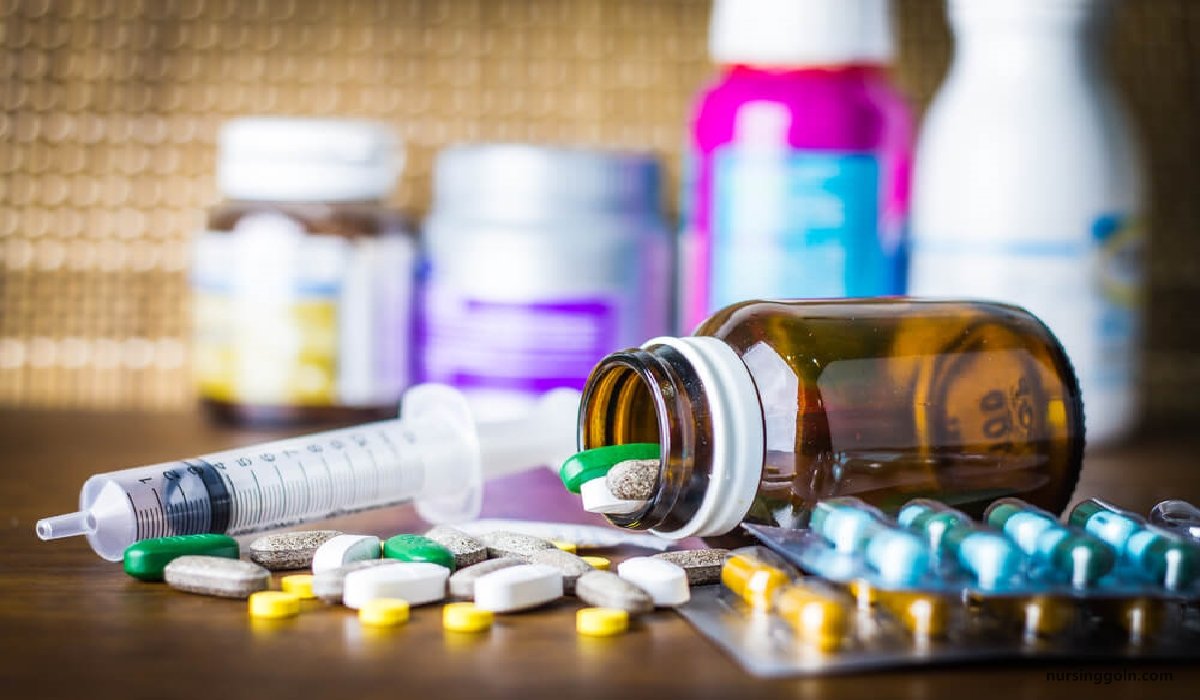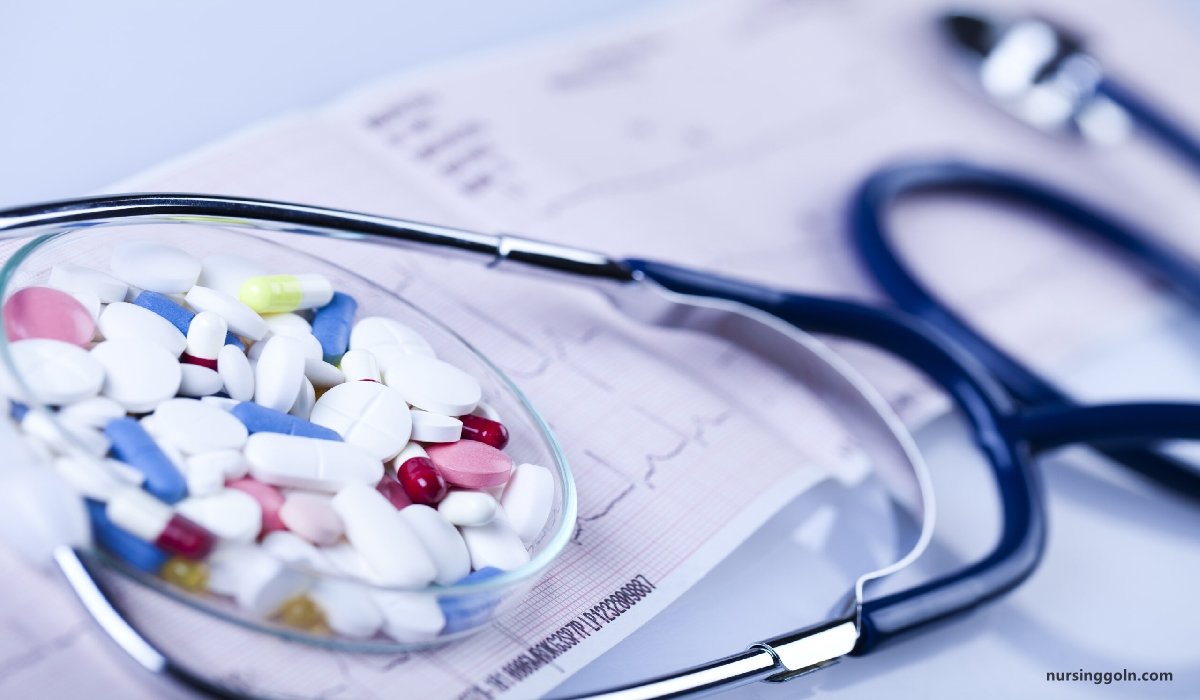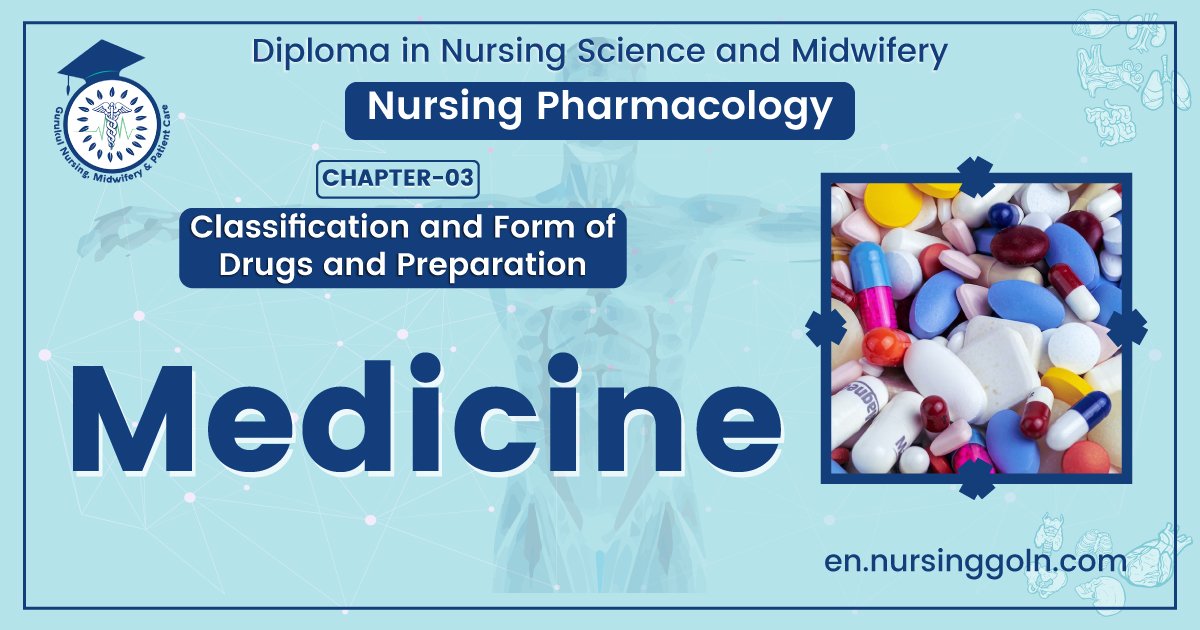Concept of Medicine – This book covers the entire syllabus of “Pharmacology” prescribed by BNMC- for diploma in nursing science & midwifery students. We tried to accommodate the latest information and topics. This book is an examination set up according to the teachers’ lectures and examination questions.
At the end of the book, previous questions are given. We hope in touch with the book students’ knowledge will be upgraded and flourish. The unique way of presentation may make your reading of the book a pleasurable experience.

Concept of Medicine
Medicine are chemical substances or mixtures of one or more substances used in suitable convenient form for treatment of diseases. All medicines are drugs but all drugs are not medicine.
Drugs in aseptic formulation are medicines.
[Ref-A Short Text Book of Pharmacology for Nursing & MATS/Dr. Tanvir/3]
Classification and Form of Drugs:
1. Prescription drugs: The drugs which are available only on prescription are called prescription drug; e.g. Anti-hypertensive drugs, anti-diabetic drugs etc.
2. Over the counter drugs: Paracetamol, Omeprazole etc.
3. Control drug: Those drug which can never be dispensed in prescription are called control drug; e.g. Morphine, pethidine etc.
4. Experimental drugs: The drugs which are on trial are called experimental drugs; e.g. newer drugs.
5. Official drug: The drugs which are included in pharmacopoeia are called official drug
[Ref-A Short Text Book of Pharmacology for Nursing & MATS/Dr. Tanvir/3]

Difference between Drug and Medicine:
| Drug | Medicine |
|
|
|
|
|
|
|
|
|
|
Difference between food and drug:
| Food | Drug |
| Food is essential compound of body | Drug is foreign substance of the body |
| Food maintains the physiological function of the body | Drug modifies the physiological process of the body |
| Food has caloric effect | Drug has no caloric effect |
| Food store energy | Drug are not store energy |
| It may produce habituations. | It may produce addiction and habituation |
| It does not produce tolerance. | It may produce tolerance, |
| It helps in growth of the body. | It does not help in growth of the bodyaMO |
| Example, rice, meat, egg | Example, Diclofenac, morphine |

Source of drug:
1. Natural source:
- Animal source: Insulin, heparin
- Plant source: Digitalis, morphine, atropine
- Microorganism: Penicillin, tetracycline, bacitracine
- Minerals: MgSO4. 7H2O liquid paraffin
2. Synthetic source: Aspirin, paracetamol, sulfonamides
3. Semi synthetic source: Pethidine, ampicillin
4. Recombinant DNA technology: Human insulin
5. Animal source:
- Pancreas is the source of insulin which is used for the treatment of diabetes.
- Urine of pregnant women gives human chorionic gonadotropin (hCG) used for the treatment of infertility.
- Sheep thyroid is a source of thyroxin used in hypertension.
- Cod liver is used as a source of vitamin A and D.
- Pituitary gonadotropins used in treatment of infertility.
- Blood of animals is used in preparation of vaccines.
6. Plant sources: Plant source is the oldest source of drugs. Most of the drugs in ancient times were derived from plants. Almost all parts of the plants are used i.e, leaves, stem, bark, fruits and roots.
Difference between Alkaloid And Glycosides:
| Alkaloids | Glycosides |
| Alkaloids are basic nitrogenous compound of plant origin | Glycosides are condensation product of a sugar and non-sugar part |
| Solubility, insoluble in water but soluble in alcohol | Solubility depends on sugar parts |
| Reaction occur salt with acid | Does not reaction salt with acid |
| Name of alkaloid usually ends in e.g. atropine, ergotamine | Name of glycosides usually ends in-in, – digoxin, digitoxin. |

Steps of Drug Development:
1. Discovery or synthesis of a potential new drug and correlating this molecule with an appropriate biological target such as cell culture, isolated organ or intact animals (in vitro study).
2. Repeated application of this process leading to increase potency and selectivity.
3. Most of the biological effect of the molecule must be characterized in animal before human trial.
4. Clinical trial; Human testing in three conventional phases before the drug can be considered for general use:
- Proposal to conduct research involving human subject.
- Reviewed and approved by scientific review committee and ethical review committee
- Conduct of research and ethical review committee continue safety monitoring.
- Publication of result.
[Ref- Rang Dale/6 /7811]
Drug Nomenclature:
Any drug may have names in all four of the following classes –
1. Code name: Is the first name that is given to a drug by the pharmaceutical manufacturer. After the synthesis of a lot of chemical compounds, some code names are given before screening its role in physiological processes done in the laboratory. It may be an abbreviation, a numerical, or combination of both.
2. Chemical name: Chemical name is the name used by the organic chemist to indicate the chemical structure of the drug.
3. Generic non-proprietary/official/ approved name: This non-proprietary or generic name is used in pharmacopoeias & chosen by the official body; e.g Paracetamol, Diclofenac, Ranitidine etc. are the generic names.
4. Trade / commercial/brand/proprietary name; This is the commercial or brand name by pharmaceutical company or companies; e.g. Napa or Ace is the brand name of Paracetamol. Seclo or Losectil is the commercial name of omeprazole.

Placebo/Dummy Medicine:
Placebo are inactive substances (have no pharmacological effect) given to satisfy patient’s demand for medicine (mental satisfaction).
Advantages of placebo/purpose of using placebo:
a. Mental satisfaction of the patient.
b. Used in control studies of drugs.
c. For the treatment of drug addict patient
[Ref-Bennett, Brown/9th/23]
Read more:
